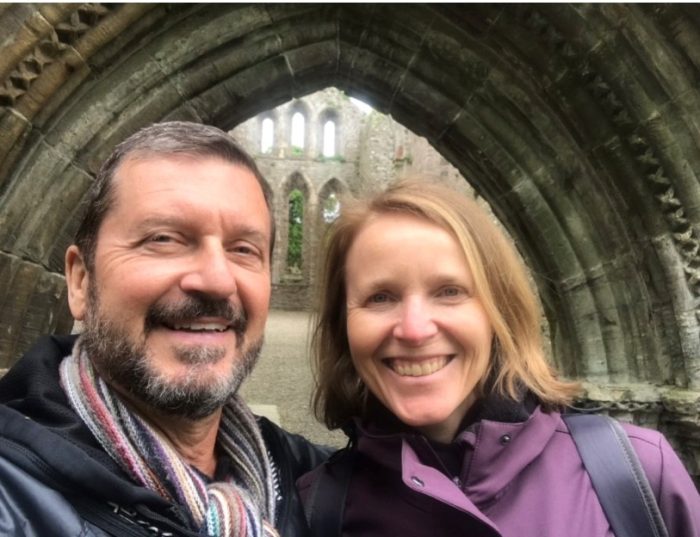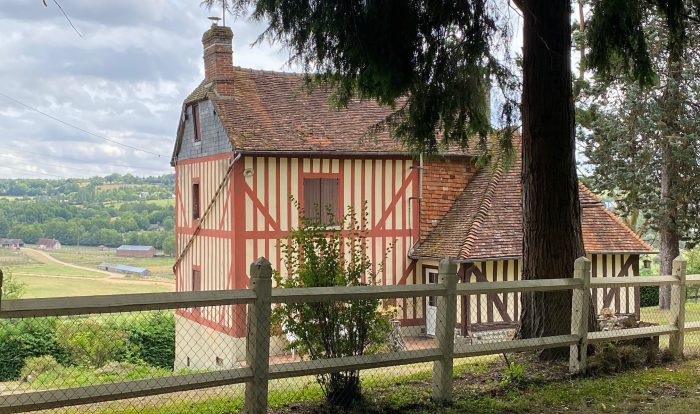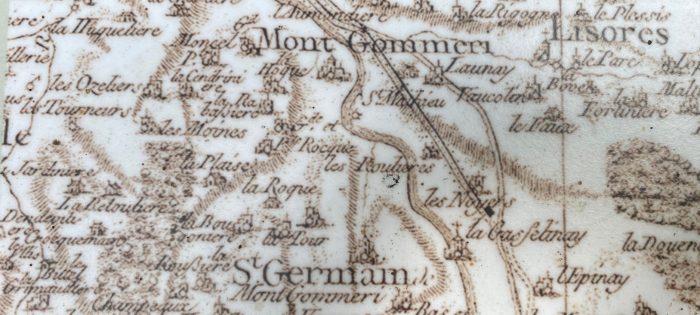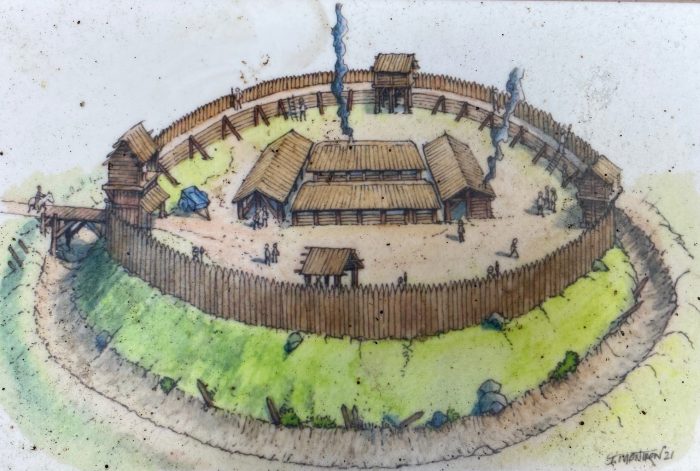France
Montgomery Origins in Normandy, France

When my wife and I visited IRELAND in 2019 to enjoy this beautiful country, we also gathered church records toward establishing and documenting my genealogy. At the time, a number of Irish we met made it a point to comment that I had a Scottish surname. Further researching of records then led to me to expand my Montgomery family ancestry to SCOTLAND.
But the story doesn’t stop there. It turns out my Montgomery line traces back to FRANCE, specifically to Normandy; and courtesy of the so-called Norman invasion of 1066, it then made its way to ENGLAND, and the other countries of Britain thereafter.
Following is a story of personal discovery of my Montgomery origins that we made in Normandy, France in 2022, specifically in the historic village of St. Germaine-de-Montgommery. (See a scene from this lovely village below.)

But first some general background: As early as 841AD, a Viking fleet appeared at the mouth of the Seine, the principal route by which the Vikings entered this part of France, Normandy, from the Atlantic coast. After attacking and destroying monasteries, including one at Jumièges, they took advantage of the power vacuum created by the disintegration of Charlemagne’s empire to take northern France.
Normandy’s name (Northmannis) comes from the settlement of the territory by these “Northmen“, confirmed by treaty in the 10th century between King Charles III of France and the Viking jarl (that is, Earl) Rollo: Thus the fiefdom of Normandy was created for the Viking leader Rollo (otherwise known as Hrólfr.) The descendants of Rollo and his followers went on to create an aristocracy that step by step adopted the local language, intermarried with the area’s native Gallo-Frankish inhabitants, during which time they also adopted Christianity.
And now switching to the origins of the Montgomery clan: Scotland magazine states the belief that the Montgomery clan of Scotland originated with a Viking named Gomeric (otherwise referred to as “Gomerici”, “Gumarick” and Gommeri) who settled on a hilltop estate in Normandy which was called “Mount Gomeric”, or “Mont Gommeri”, which eventually evolved into the Montgomery family name. Although there are different schools of thought amongst historians as to the parentage of Gomeric, the majority of historians do opt for a Scandinavian origin, both of him and therefore of the Montgomery family, according to Luc De Boever, who wrote “The Montgommerys from the Vikings to our Present Day”.
The “Montgomery Manuscripts”, written prior to 1700, similarly confirm “there is strong evidence that the Montgomery name … originated from Denmark or Sweden.”

Once in Normandy, we drove to the village of St. Germaine-de-Montgommery, searching the area, and talking to locals, some of whom remembered hearing legends of tall, blonde, blue-eyed people living in the area. We then came across this old French map, as shown above, which provided some valuable clues: You’ll note “Mont Gommeri” above “St. Germaine-de-Montgommery”.
In the photo below, just behind me, is the actual location of the fortress of Gomeric, built on the highest point in the whole area we traveled, offering an unimpeded view of the entire valley below!

And below is a rendition of what the fortress looked like circa 950AD, complete with a moat around the very base of the property. (Illustration courtesy John Morton Montgomery of Clan Montgomery)

The “Mount Gomeric” (or “Mont Gommeri”) fortress is located a short distance from the ancestral property (shown below) of Count de Montgomery (offspring of Gomeric) in St-Germaine-de-Montgommery. (See “Le Comte” written on signs on the right, French for “The Count”.)

I later learned from the book “The Montgommerys from the Vikings to our Present Day”, by Luc De Boever, that the fortified enclosure shown earlier was built about 950AD, then destroyed and rebuilt a number of times after 950 AD:
1040 – Alain III of Brittany besieged it and burnt it. (After this event, Roger I de Montgommery was sent/went into exile in Paris, taking refuge in the court of the King of France.)
1047 – Roger II de Montgommery rebuilt the Fortress, which was defended by his brother, Gilbert De Montgommery.
1057 – It was burnt down again by the troops of the King of France Henri I during his attempt to take back Normandy.
1066 – Roger II De Montgommery again had the fortress rebuilt.
Since we now arrive at 1066, allow me to highlight this notable fellow in this line, Roger de Montgommery (Roger II), born about 1022, who also lived on this property in St-Germaine-de-Montgommery. After the Norman Conquest of England in 1066, Roger de Montgommery, a close confidante to William the Conqueror, arrived in England. and soon thereafter was given the titles of Earl of Chichester, Arundel and Shrewsbury. Roger ended up owning over 100 manors, plus most of Shropshire, and became so wealthy that he alone commanded 3 per cent of the country’s entire GDP! Oh yes, and he also had a county in Wales (Montgomeryshire) named after him. (This Roger de Montgomery, who was one of the first to drop the second “m” from his surname after his arrival in England, is listed as one of the largest landholders in the Domesday Book, a survey conducted in 1086 under William the Conqueror.)
Sons and descendants of Roger de Montgomery married women from royal and/or influential English, Irish and Welsh families, and so their Montgomery progeny date back to the 1100’s in England, Wales and Ireland.
And just to make the France-to-Scotland connection: The name Montgomery was first recorded in Scotland in the 12th century. Robert de Montgomery, a great-grandson of Roger de Montgomery became the first of the family in Scotland, who along with two younger brothers, went north with Walter Fitzalan, the first High Steward of Scotland, in the reign of David I. In 1165, this Robert de Montgomery (1st Laird of Eaglesham) received a grant of the manor of Eaglesham in Renfrewshire, Scotland, which his descendants owned for seven centuries. (You can google “Montgomery Eaglesham Renfrewshire“ for much more Scottish history should you be interested.)
In addition to imbibing all this history, we found it interesting indeed to be able to substantiate that a Viking named Gomeric is the one who fostered the Montgomery clan!
